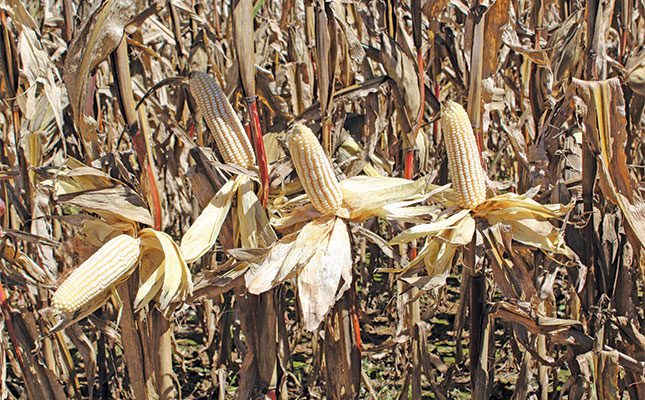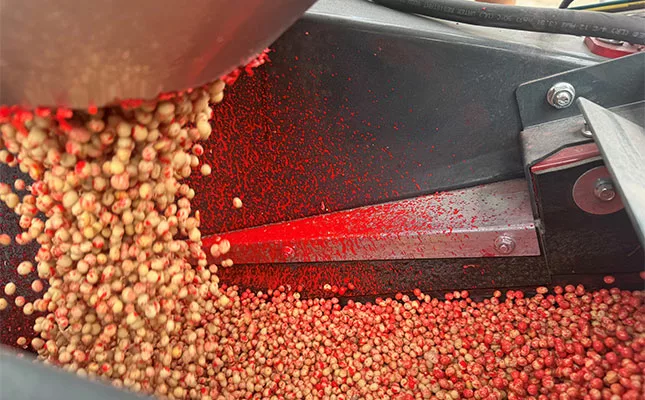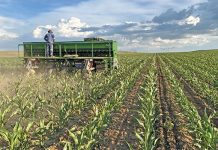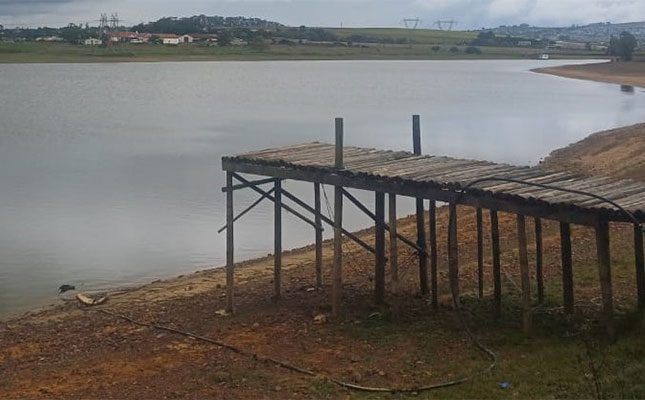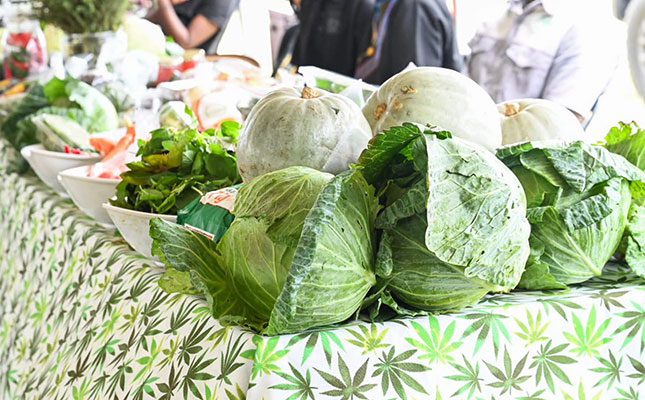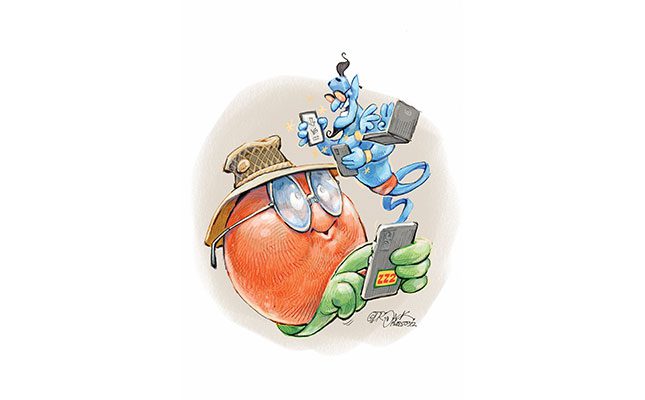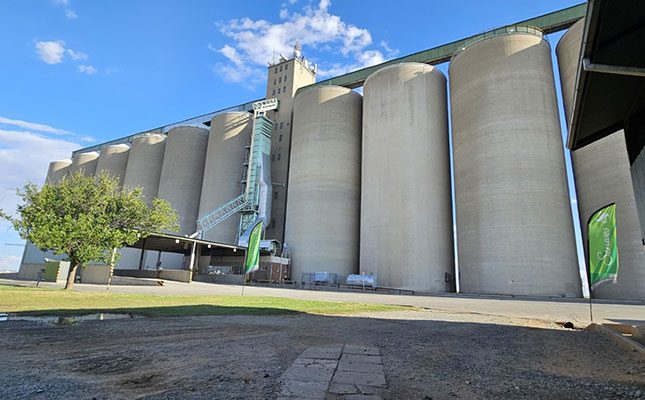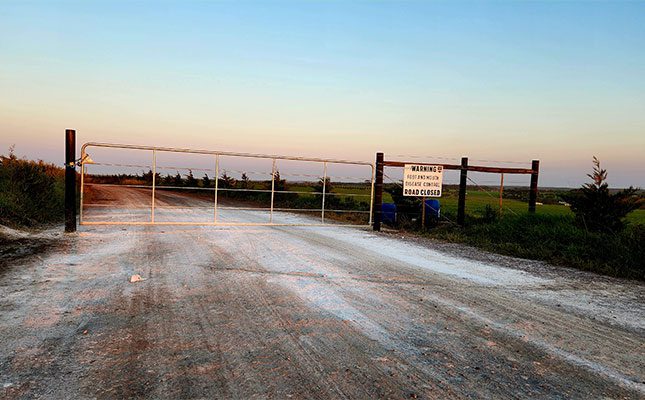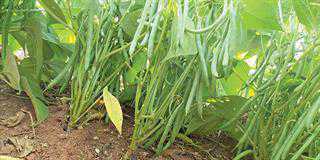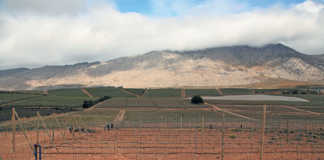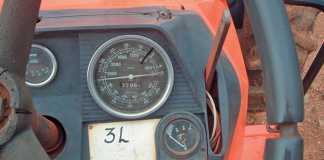
Photo: FW Archive
In table grape production, boron is one of the most vital, yet often overlooked, micronutrients.
Although it is required in small quantities, its impact on yield, fruit quality, and pollination is substantial.
Pieter Botha, agronomist at Yara Africa Fertilizer, shared key insights into the importance of boron, its behaviour in the plant-soil system, application strategies, and considerations for long-term management.
Boron’s importance
Boron is one of 12 plant-essential nutrients and is specifically classified as a micronutrient. In grapes, however, boron – along with zinc – is required in greater quantities than other micronutrients, due to its importance for growth, fruit set, yield, and grape quality.
Table grapes typically use anything between 150g/ha and 300g/ha of boron annually, but the actual requirement varies depending on soil type, cultivar, planting density, vigour, and canopy volume.
Boron is involved in critical physiological processes, including enzyme function, carbohydrate metabolism, sugar translocation, and the synthesis of nucleic acids and plant hormones.
It is essential to maintain the structural integrity of cell membranes and is concentrated in growing points such as young leaves and fruit.
Moreover, boron facilitates calcium transport within the plant and improves cell wall elasticity, making it especially important for flower development, pollen germination, fruit set, and berry development.
Adequate boron nutrition also directly influences crop yield and uniformity.
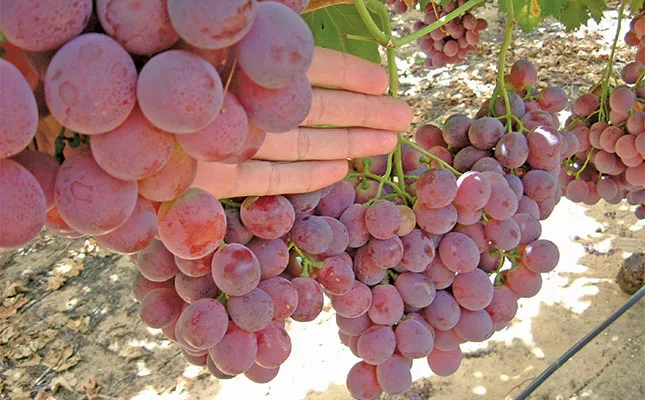
Application and Mobility
Boron can be applied through soil or foliar applications. However, once absorbed by the plant, boron becomes fixed in structural tissues, such as the cell walls, making it immobile. As a result, deficiency symptoms typically appear first in young leaves.
Foliar applications are particularly effective for correcting deficiencies because they deliver the nutrient directly to where it is needed – in young leaves and developing fruit.
Soil applications, on the other hand, are critical in boron-deficient soils and are often used in combination with foliar treatments to ensure consistent availability during critical growth periods.
Impact on Pollination & Fruit Set
Boron plays a vital role in pollen development and viability. When boron levels are sufficient, pollen grains are well-formed, which enables successful pollination.
Inadequate boron results in poor pollen germination, reducing fertilisation success and ultimately leading to fewer and smaller berries.
Sufficient boron levels significantly improve fruit set by supporting the transformation of more flowers into viable berries. However, boron must be applied with care, as toxic levels can be reached quickly.
Critical Timing for Boron Application
Boron is most crucial just before and immediately after flowering, to ensure effective pollination and a full berry set. Postharvest applications are also recommended to replenish tree reserves ahead of the next season.
Yara recommends the following foliar schedule:
- one foliar application at flower truss separation;
- one foliar application at fruit set;
- one foliar application at post harvest (if leaf analysis shows boron is below the norm).
Application rates depend on the product and results from leaf and soil analyses. For example, when using YaraVita Bortrac 150, a boron-rich foliar product, rates range between 0,5ℓ/ha and 1,5ℓ/ ha, using 500ℓ to 1 000ℓ of water per hectare.
Soil applications can be done early in the season, from about 10cm shoot length, and again postharvest. The specific rates depend on the soil type and product specifications.
Deficiency Symptoms and Monitoring
Early symptoms of boron deficiency are usually visible shortly after bud break. These include retarded shoot growth, a zigzag shoot pattern, shortened internodes, and numerous dwarfed lateral shoots. In severe cases, shoot tips may fail to develop properly.
Later in the season, deficiency manifests as poor berry set and uneven bunches, composed of both large and small berries – a condition known as ‘hen and chickens’. This uneven development leads to non-uniform ripening and reduced marketability.
To monitor boron levels, Yara recommends tissue sampling at two growth stages: fruit set and veraison. The preferred method is to collect around 30 leaf blades (excluding the petiole) closest to the bunch at 110% fruit set. According to Yara, leaf blade analysis is more accurate and reliable than petiole testing.
Effective Application Methods
Foliar application remains the most effective method for micronutrient delivery, particularly because such nutrients are required in small amounts and can be absorbed directly by the leaves and fruit.
However, in sandy or sandy-loam soils, where boron levels tend to be naturally low, soil applications are also essential.
Research from California in the US has shown that repeated annual soil applications over three years are effective in correcting severe deficiencies.
In fertigation systems, boron is commonly included unless existing levels are already very high.
For optimal nutrient management, growers are encouraged to conduct regular soil and leaf analyses and adjust applications accordingly.
Products for Boron Nutrition
Yara offers several products to meet growers’ boron needs:
- YaraVita Bortrac 150: a dedicated foliar boron product containing 150g/ℓ of boron;
- YaraLiva Nitrabor: a granular soil-applied fertiliser containing 15,4% nitrate, 18,6% calcium, and 0,3% boron. Ideal for early-season use when root activity is high;
- Yara AB Flex System: fertigation solutions that include boron, along with other nutrients, though not as a stand-alone product.
For safe and effective tank mixing, growers can use Tankmix.com, Yara’s compatibility checking platform.
If a desired combination is not listed, growers can request a test and typically receive feedback within two weeks.
Yield, Quality, and Risk Management
According to Yara, boron applications can significantly enhance table grape yield and quality, though the extent of improvement depends on the severity of the initial deficiency and the plant’s ability to access boron during key stages.
Boron toxicity, although rare in table grapes, can occur in soils with abnormally high levels. Symptoms include necrotic leaf spots that progress to yellowing and leaf death. In such cases, Yara recommends increasing soil organic matter (like through compost incorporation) and improving drainage (for example, installing internal drains or planting on ridges) to help leach excess boron.
Economic Considerations
With the production cost of table grapes exceeding R400 000/ha (2023), Botha emphasised that the risk of yield loss is too great to consider boron application optional.
Regardless of short-term cost-benefit analyses, boron should be included as part of the base nutritional programme, both as a soil amendment and foliar input, based on analysis results.
Even when soil and leaf levels are optimal, Yara recommends one to two routine foliar applications per season as part of a comprehensive nutrient strategy.
Soil Types and Availability Factors
Boron deficiencies are commonly observed in alluvial soils near river basins. These soils tend to have sandy to sandy-loam textures, low clay and organic matter content, high stone content (often exceeding 50%), and poor cation exchange capacity.
Soil pH also significantly affects boron availability. Levels are limited at both low pH (below 4,5) and high pH (above 8,0). The optimal pH for boron availability is around 6,5. 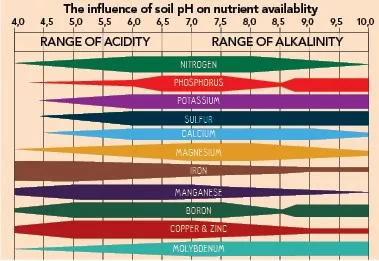
Growers are encouraged to use lime to raise low pH or carefully apply acidifying fertilisers to lower excessively high pH levels.
While organic matter can bind boron, increasing organic matter generally improves overall soil health. If compost is applied at 15m³ or more per hectare, additional foliar applications may be required to ensure sufficient boron availability.
Conclusion
Boron may be required in small quantities, but its impact on table grape production is anything but minor.
From improving fruit set and berry development to supporting pollination and overall tree health, boron plays an essential role throughout the growing season.
As Botha emphasised, a well-planned boron programme, based on accurate soil and leaf analyses, can help farmers achieve consistent yields and high-quality grapes, while minimising the risks of deficiency or toxicity.
For more information email Pieter Botha at [email protected], or visit yara.co.za.

